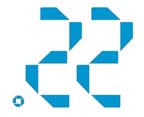Did Chase employees lie to avoid getting stuck with a counterfeit bill?
This story is a little worrisome. It’s one thing if an institution like a bank is out to cheat you through small print or policies that are heavily stacked in their favor. But it is entirely another thing when a bank or its employees will flat-out lie to protect themselves. In this case the evidence seems to implicate that Chase employees lied so as not to get stuck with a counterfeit bill.
In mid-August, Krier went to the credit union and withdrew five $100 bills to pay his rent. He and Day prefer to handle things in cash. A few days later – Aug. 16 – Day stopped by the Chase branch to deposit the money.
“I gave the teller the bills, and he never looked at them,” Day recalled. “He put them in the drawer and gave me a receipt.”
Day said he couldn’t remember anyone at Chase ever examining the rent money he deposited. “Never once,” he said. “They’d always just drop it right in the till.”
A few days later, though, Day received a notice from Chase informing him that one of the $100 bills was found to be counterfeit.
Day went to the branch and asked what was up. A bank worker reiterated what was in the notice and said the $100 had been deducted from his account. Day asked how they knew the bogus bill had come from him.
“I was told that a manager had seen me make the deposit,” he said. “But I don’t remember anyone else being there. In fact, I don’t know what happened after I walked out the door.”
Gary Kishner, a Chase spokesman, said that when Day made his deposit, the teller inspected each $100 bill under a black light. Nothing appeared amiss.
“After the customer left, the teller had to fill out a form for the deposit,” Kishner said. “This time, one of the bills looked a little weird. He called over a supervisor, and they held it up to the light.”
It became apparent that the bill was actually a $5 note that had been monkeyed with to look like $100. Kishner said that because the paper was genuine, the initial black-light scan hadn’t caught anything.
Now comes the really important part.
“The money was never put in the drawer,” Kishner said. “If the money had been put in the drawer, we wouldn’t have known for sure that it came from one particular customer, and we would have taken the hit. But it didn’t happen that way. It never went in the drawer.”
Day was incredulous when I relayed this to him.
“That’s an absolute and utter lie,” he responded. “It’s completely false. I saw it go into the drawer, just like they always do it.”
Kishner replied that “we have a teller and a manager who say it took place the way it did.”
Be that as it may, he later told me that Chase had reviewed its security tapes and found that they were “inconclusive” as to whether the money had actually stayed on the counter or went into the drawer.
For that reason, Kishner said, the $100 will now be returned to Day’s account.
Inconclusive? I’d sure like to see those tapes.



